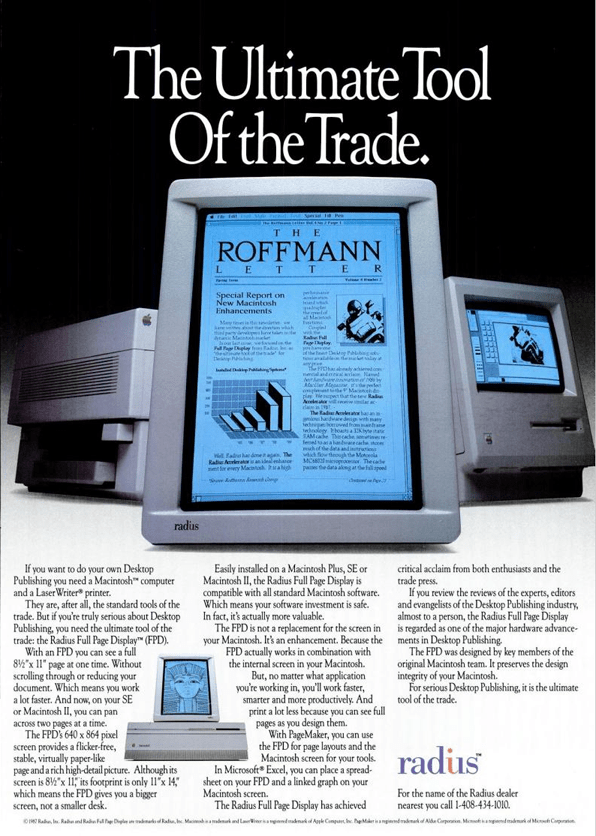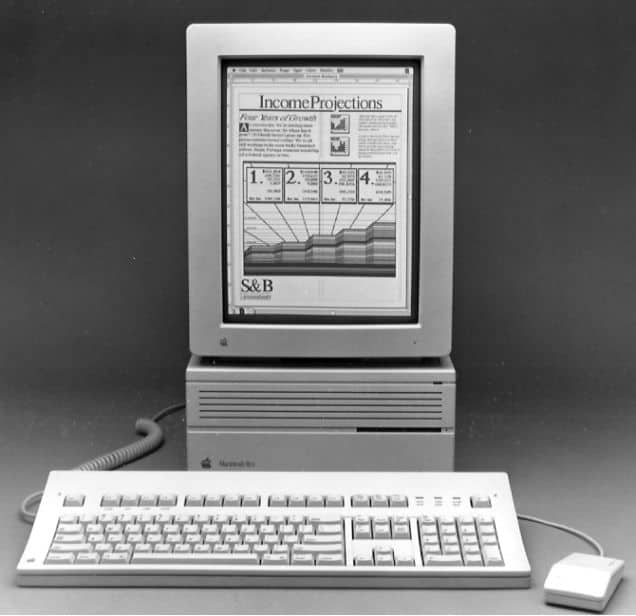[ad_1]
 March 7, 1989: Apple introduces the Macintosh Portrait Display, a 15-inch vertical grayscale monitor designed to show full pages on a single screen. Intended for word processing and desktop publishing, the $1,099 monitor (plus $599 for an additional video card to run it) works with any Macintosh.
March 7, 1989: Apple introduces the Macintosh Portrait Display, a 15-inch vertical grayscale monitor designed to show full pages on a single screen. Intended for word processing and desktop publishing, the $1,099 monitor (plus $599 for an additional video card to run it) works with any Macintosh.
Something of a rarity today, the Macintosh Portrait Display is an early example of the supersized displays Apple would release years later.
Macintosh Portrait Display launch
The need for portrait-oriented vertical displays grew out of Apple’s popularity with creatives. Macs generally took a backseat to IBM PCs running Windows. However, Apple computers became ubiquitous in the publishing industry within a few years of coming on the market.
Macs proved especially good for magazine layouts due to the WYSIWYG (“What You See Is What You Get”) interface, which let users see the end result of a document or layout before printing it. This stood in stark contrast to many PC programs at the time. Apple also benefited from innovative software like early desktop publishing program Aldus PageMaker.
A vertical monitor that, like the iPad today, could present the display equivalent of an A4 sheet of paper — only larger — became an obvious next step for Apple. The first company to develop such a screen was Radius, a startup founded by various Macintosh alumni. (Radius later became a manufacturer of Mac clones in the mid-1990s.)
The Radius Full Page Display shipped in 1988, a year before the Macintosh Portrait Display. Radius dropped the price of its monitor to $895 when Apple’s alternative arrived the next year.

Photo: Radius
Macintosh Portrait Display specs
The Macintosh Portrait Display offered a resolution of 640 by 870 pixels at a pixel density of 80 dots per inch. It boasted antiglare technology and an impressively crisp flatscreen form factor.
It wasn’t perfect, though. The vertical display could prove temperamental. In fact, Apple’s troubleshooting manual noted that “environmental influences” could cause the monitor to glitch.
What kind of environmental influences?
Try close proximity to metal desks, file cabinets or bookshelves. Or being situated near fluorescent lights, other monitors or electronic appliances such as coffee makers or copy machines.
“These objects cause dynamic raster distortion — that is, movement or jitter of the image,” Apple noted.

Photo: Apple
Apple retires its vertical display
The Macintosh Portrait Display lasted until December 1992. At the time, people viewed it as a quirky experiment from Apple with only limited applications. Today, it appears very clear that an elongated display was an innovation very much worth pursuing — seen most notably through the way we vertically view web pages on our iPhones.
Do you remember the Macintosh Portrait Display? Leave your comments below.
[ad_2]
Source Article Link

